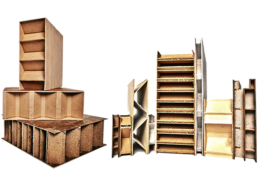ECOR is a commercialized cellulose-based material made from natural and man-made waste that can be used to manufacture a wide range of construction products.
ECOR is a flexible and multi-use material for construction, interior design and furniture-making. It is made from cellulose fibers, an abundant material found in urban, agricultural and forest waste. Waste materials such as cardboard, wood and by-products from agriculture are combined with water, and then heated and pressurized to make ECOR products. The material can also be recycled into new products after use and contains no chemicals, petroleum or other additives.

The current ECOR manufacturing facility processes 1,250 tons of waste per year, and there are three more large facilities planned which will collectively convert a total of 37,500 tons per year.
Why you should care
The circular economy will play a key role in decreasing global demand for new raw materials in a world with finite resources. This solution is an effective and sustainable substitute for wood and paper-based materials, and is made entirely from waste products.
How the Global Goals are addressed
![]() Responsible product and consumption
Responsible product and consumption
This solution shows how the fibers of waste materials can be used to create new products, helping to reduce waste disposal to landfill and decrease demand for new raw materials.
![]() Life on land
Life on land
Once constructed, the four ECOR facilities will save around 600,000 trees and 75,000 cubic meters of landfill space per year according to the company.


